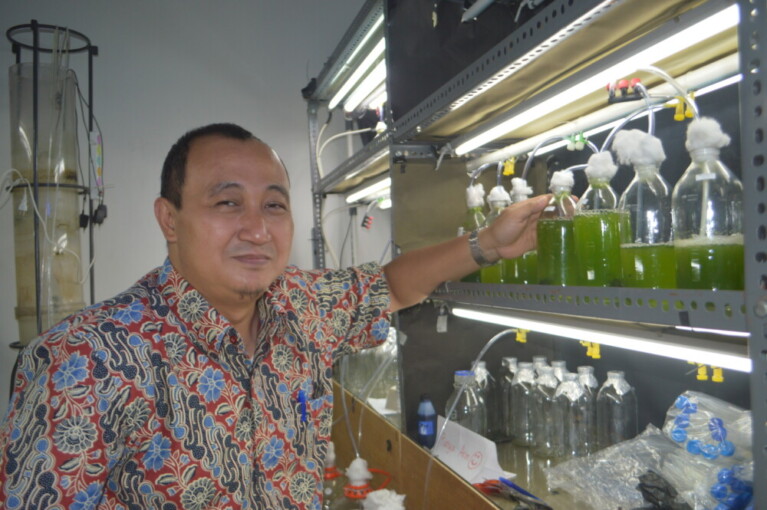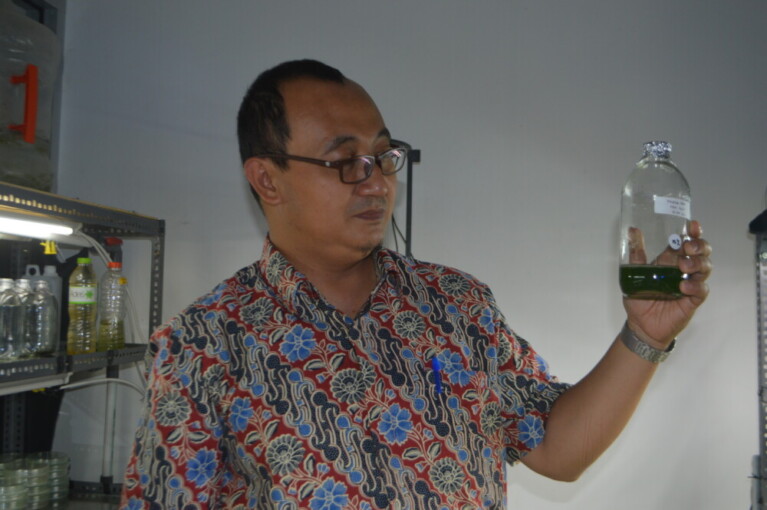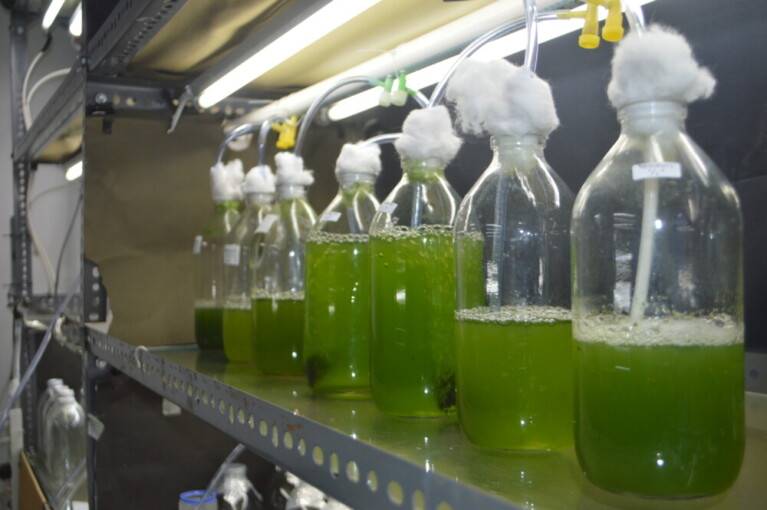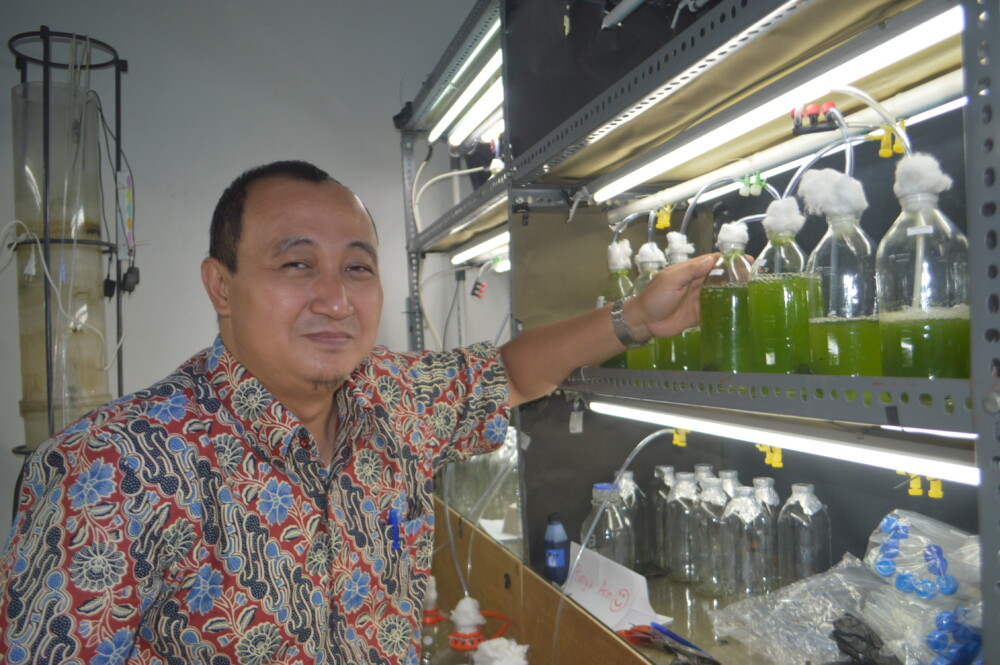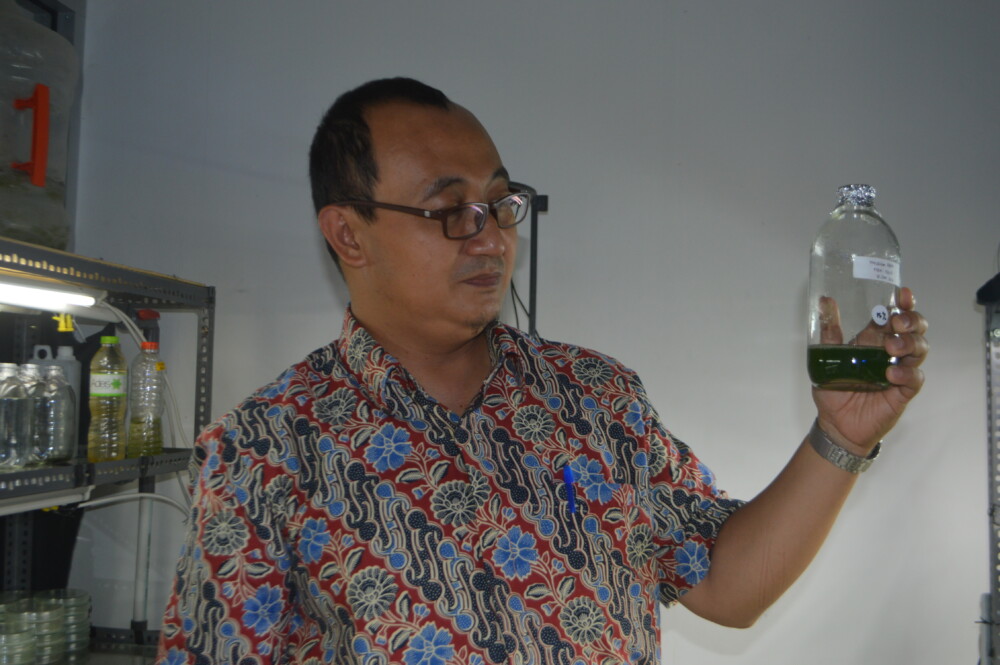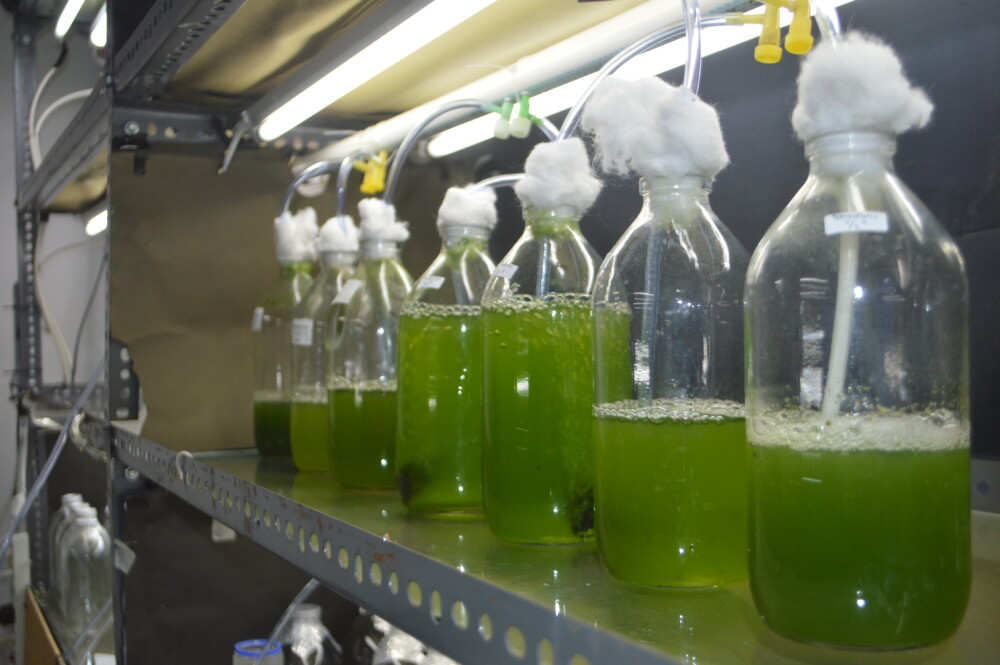Researchers from Universitas Gadjah Mada (UGM) have developed local strain microalgae that has the potential to be used as bioenergy resource.
Dr. Eko Agus Suyono,M.App.Sc., developed Tetraselmisspp. and consortium of Glagah strain microalgae since 2004. Eko said the research was sparked by his attention to the depleting oil resources in the country. He saw the untapped abundant supplies of microalgae has great potential for bioenergy resource. “Indonesia has a great potential for microalgae development because as high as 70% of its areas are seas. Meanwhile, microalgae diversities in Indonesia are huge to be tapped into bioenergy, among others are Tetraselmis spp. and consortium of Glagah strain microalgae,” the Biology lecturer said on Monday (13/2) Faculty of Biology UGM.
Eko explained initially he used imported isolate as not many are available locally. “Then I tried to find local strain microalgae,” he said.
He used local isolate Tetraselmis sp. of Ancol strain and some others. The single strain and fermentation using Saccharomyces cerevisiae can produce bioethanol. An incubation lasting 48 hours can produce 0.36 g ethanol/g biomass, equivalent with the highest reported bioethanol result in a Korean research publication.
Despite this result, the microalgae cultivaton cannot yet produce big enough amount of biomass in order to be able to produce adequate natural fuels. Eko gave the research a second try using multiple strains microalgae. The result was better than the single strain, but still unable to produce a huge biomass.
Eko went on with the research and developed local isolate microalgae that he had isolated from the Glagah beach in Kulon Progo regency, named as consortium of Glagah strain. It turned out that it made a symbiosis with bacteria for biodiesel raw materials.
The microalgae consortium consists of 6 species of microalgae, Cyclotella polymorpha, Cylindrospermopsis raciborskii, Golenkinia radiata, Syracosphaera pirus, Corethron criophilum and Chlamydomonas sp. while the bacteria that form the consortium microalgae consist of genus Corynebacterium, Bacillus, Pediococcus, and Staphylococcus.
“The result was much better than if using single strain or multiple strain microalgae and the amount of biomass that is produced is much bigger,” said the Vice-Dean for Research and Community Service.
In its developments, Eko uses biorefinary system that can also produce medicines and cosmetics, food, feed, and other active compounds.
“Using bioefinery system can minimise the cost by three times cheaper,” he said.
He said the use of microalgae for fuel raw material does not jeopardise other crops and it does not take up the plot for crops. Harvesting of microalgae is shorter compared to that of other crops, which is 3-21 days.
“Going forward, further research still needs to be done so that the local microalgae can be used as alternatives to renewable energy to resolve the national energy crisis,” he concluded.



